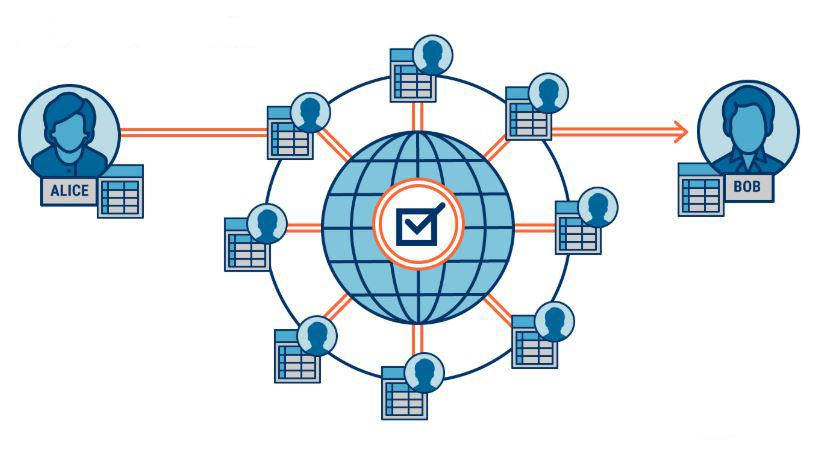
Blockchain 101
Blockchain appears to be one of the buzzwords of the year. It is one of the words that have been making headlines in both the mainstream and social media platforms. But despite the word being used in numerous platforms, there are some people who do not actually know what the word means.
Now, imagine this scenario. You and your colleague are moving money from one account to another. The first thing that you would do is to get in touch with the bank and ask them to move the funds to your colleague’s account address.
While moving the money from your account to the colleague’s, the bank will place an entry on the register of transactions. The listing should be updated on both the accounts of the sender and receiver. However, there is one problem: it is easy to tamper with. Anybody can easily change or manipulate the transaction entries. Due to this problem, people who understand how the banking system works are doing all they can to avoid this problem.
This is one area where the issue of blockchain comes in.
Defining Blockchain
Microsoft Excel or Google Spreadsheet can be a good example here. The spreadsheet is normally shared among a number of networks of computer, where all the users have a copy of it. The spreadsheet is made up of information about the transactions that have occurred between real people.
Anybody can access the spreadsheet, but none can easily edit it.

Here is Blockchain
It basically works with blocks, while spreadsheets operate with columns and rows. A block that makes up the blockchain is an assortment of data. The data is then added to the block in a blockchain, by ensuring that it is connected with a number of other blocks in chronological order. It, therefore, creates a chain of blocks that are linked together.
The first block in the blockchain is known as the Genesis Block.
Blockchain is basically a distributed ledger. This implies that a ledger is spread across the network among all the peers in the network. Each of the peers contains a copy of the full ledger.
There are specific important attributes of blockchain that prove that it is better than the traditional systems of keeping ledger information. They include the following;
Distributed – The ledger is normally spread across the entire network, and that makes it so hard to tamper with.
Peer-to-Peer – No central authority can manipulate or control it. All the participants get an opportunity to talk to each other directly. This enables data exchange to be done directly with the involvement of the third parties.
Cryptographically Secured – Cryptography is applied for the security services to ensure that the ledger is tamper-proof.
Add-Only – Data can only be added to the blockchain in time-sequential order. This property implies that once data is added to the blockchain, it becomes very hard to change that particular set of data. The data can now be regarded as practically immutable. It can be said that it has the right to erasure and the right to be forgotten.
Consensus – Among all the attributes, this is the most important. This attribute offers the ability to update the ledger through an agreement. This is what grants it the power of decentralization. There is no central authority that takes full control of the ledger. Instead of that, any of the updates that are made to the blockchain is validated against very strict criteria. The criteria are usually defined by the protocol of the blockchain and then added to the blockchain. This, however, must be done only when a consensus has been reached among all the participating nodes or peers on the network.

How Blockchain Works
In ordinary cases, a node will begin the transaction by first creating and then signing it digitally with its private key. The private key is designed through cryptography. A transaction can represent more than one action in a given blockchain. In most instances, this is basically a data structure that represents the transfer of value between various users on the entire blockchain network.
The structure of the transaction data is normally made up of certain logic of transfer of value, source and destination addresses, relevant rules, as well as a number of other validation information.
A transaction is normally flooded or propagated by applying a flooding protocol. The protocol is known as the Gossip protocol. It is propagated to the peers that validate the transactions depending on the criteria of that particular criteria. In most cases, more than a single node is needed to verify the transaction.

Once the transaction has been successfully validated, it is then included in a block that is then propagated onto the network. The transaction is regarded as confirmed at this particular point. The newly created block will now become part of the ledger, and the next block will connect itself cryptographically back to the block. This particular link is a hash pointer.
The transaction will get its second confirmation as the block receives its first confirmation.
The transactions are then reconfirmed each time a new block is created. Mostly, a total of six confirmations in the network are needed to consider the transaction final.
In Conclusion….
The genius behind blockchains that makes them different from a normal database is that they reach an agreement on the history by sharing and restricting the entries without a central server or authority. Take that banks with all your fee’s and holds!
